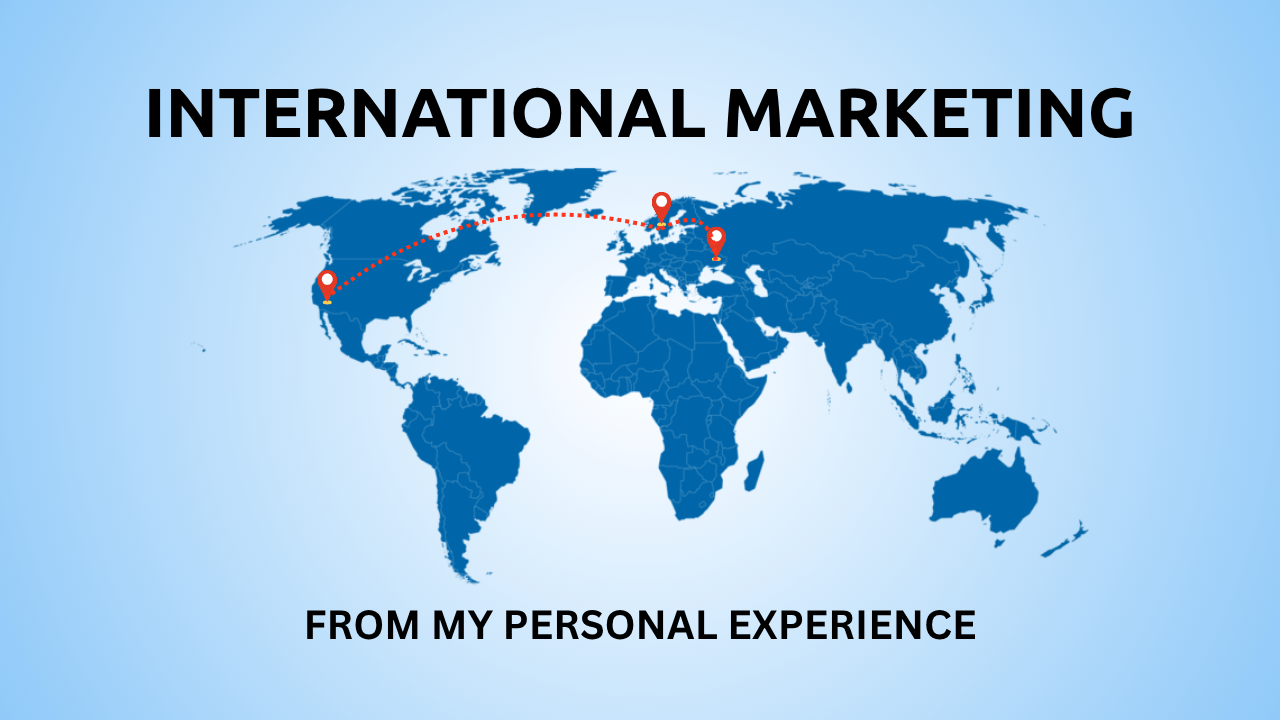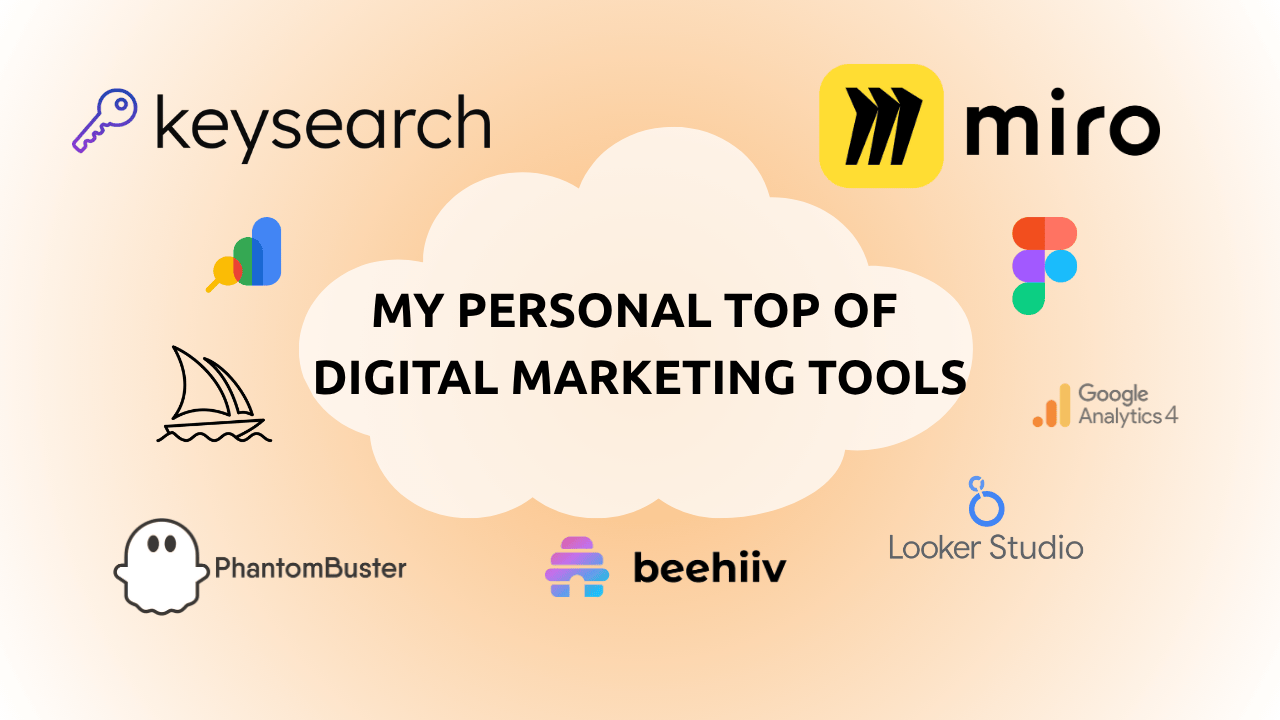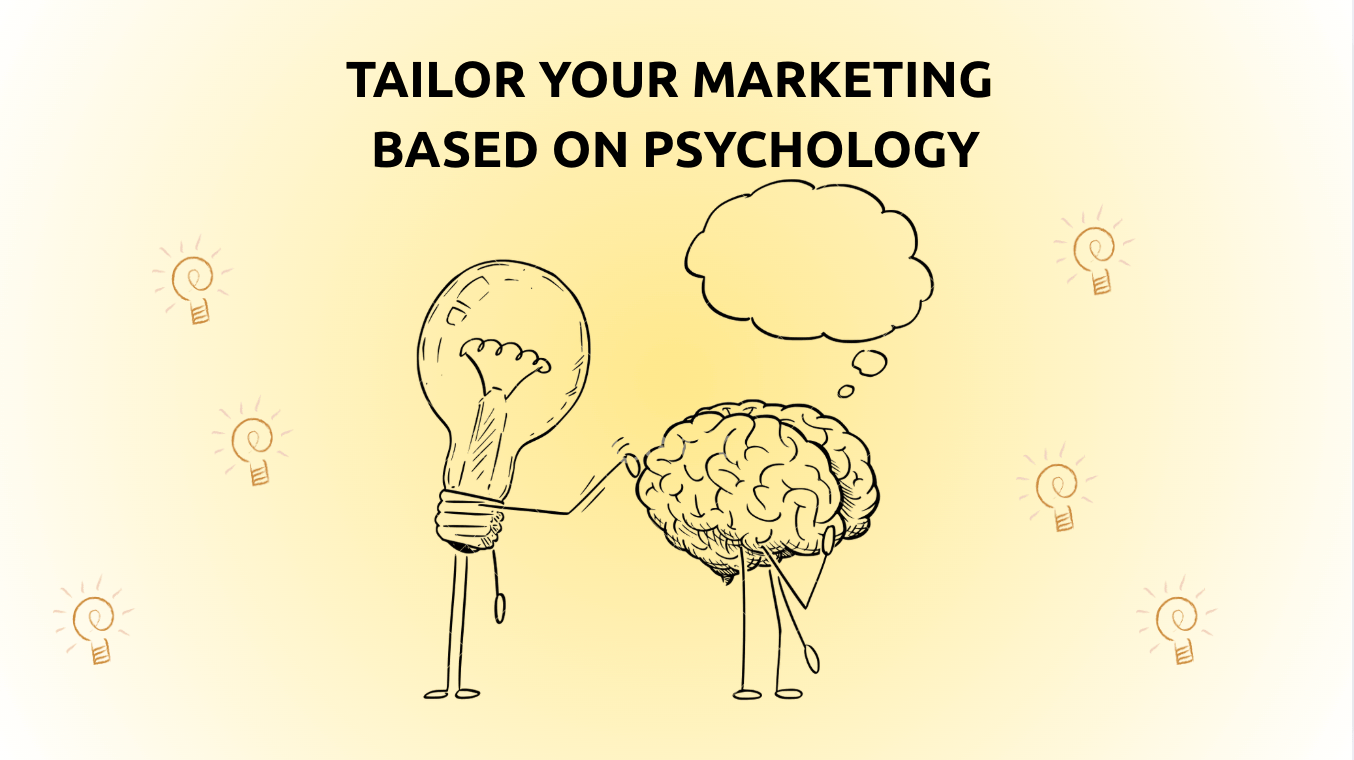How I approach cold B2B outreach in 2025

I get cold email outreach messages every week. I also get messages with different kinds of proposals on my LinkedIn a couple of times per month.
Do I respond? Extremely rarely.
I did a lot of cold B2B outreach campaigns myself. Did I get responses then?
Not at the beginning, but after many tries and errors, and analyses, some campaigns reached a 60% MQL rate. MQL stands for marketing qualified lead and means that those are people (B2B leads) who are interested in the offer and are willing to communicate to get to know more. Which is a pretty good result for cold outreach.
To me personally, B2B outreach is about personalization and volume. It is hard to maintain both at the same time, but not impossible.
In this article, I will share some strategies and tips with particular examples of how you could do B2B cold outreach (and make it warmer :)) and improve your lead generation.
What is B2B outreach?
B2B (business-to-business) outreach (it can also be called B2B sales) is when one company actively approaches another one in order to drive sales, generate leads, and make partnerships. Overall, it’s when one company suggests its product to another.
It can happen through different channels like networking, email, phone calls, social media, and others. One of the main aspects of the B2B approach is that it is tailored to build long-term connections and maintain partnerships over time. The sales cycle for B2B sales can also be much longer.
Of course, when we say that companies approach companies, we ultimately mean sales reps (people who are responsible for sales) approaching other people who are responsible for certain processes in another company and can make decisions.
Does B2B cold outreach still work?
It depends. 😂 It depends on what niche you are in, how you do it, what kind of people you are targeting, and how. I know it might not be a satisfying answer, but that’s the truth.
Right now, the market is extremely competitive, and a lot of companies approach other companies multiple times a day, every day.
I constantly get emails and LinkedIn messages with different offers myself. I was also conducting B2B outreach campaigns myself, so it is fair to say that I’ve been on both sides.
The ultimate answer is that it can work if you do it right.
B2B outreach strategies
There are many lead generation cold outreach strategies. Let’s briefly talk about each one of them to get a little bit more familiar with the possibilities.
Email marketing outreach
I think everybody understands what that means. You have an email list of people who might be interested in your product or services and who are decision-makers in their companies.
You use this email list to send out your offer in so-called "cold emails." Sometimes it is one email only; sometimes it is a sequence of different messages. Email campaigns are widely used in the United States but are a little less popular in Europe.
For this campaign, you’d track open rates, response rates, and conversion rates (those are the main metrics).
LinkedIn outreach
LinkedIn outreach is very similar to email outreach. The only difference is that you send out your messages through LinkedIn and not through email.
This channel has its own specifics, like connecting and interacting with people before sending them a message. I will talk about it a little bit more later in this article.
The thing that I like about this channel is that you can find people who might be interested in your product and collect data from LinkedIn itself. Finding the right people is half of the success, so it can be really beneficial.
Here you will track connection rate, reply rate, and conversion rate.
Cold calling
Old but never dying method. You get a list of phone numbers and make sales calls to introduce your product or service. Honestly, I only tried this method once, and it is definitely not my style of interaction.
I know it works for some companies and some businesses, but I find other methods more appealing (for me personally).
If you consider this method, you should hire the right person for this (or be this right person yourself). The sales rep should understand the product he is selling completely, be polite, understanding, and patient, and most importantly, like what he is doing at least a bit.
Referral programs
Bring a friend and get a 20% discount kind of thing. It can be used for businesses, too. It’s important to understand what kind of offer would be beneficial to you, because you don’t want to suggest a deal that will hurt your finances.
The deal should also be appealing enough to encourage people to recommend and refer you. What can it be:
- Get a 20% discount for 3 months on our app (if you are a SaaS company)
- Get an audit of your website for free (if you sell services like that)
- Get a free MVP (minimum viable product) strategy
It’s all about making a good offer and, at the same time, acknowledging your business’s possibilities.
Event/webinar organization
This method is also very well known. You can organize either online or offline events to build connections, show your expertise, and convert clients.
You can also attend other people’s events to meet people and build connections out there. Both ways work pretty well. It is always good to meet people offline and have this personal touch.
It can be harder to organize compared to other methods, but it is still worth doing.
How I approached B2B outreach
I’ve worked on multiple strategies with B2B cold outreach in the past. In this article, I want to concentrate on the LinkedIn B2B outreach campaign and talk more about it. I want to give you some particular examples of this sales cycle so you can better understand how you could approach this.
Let’s make up a company that would use B2B outreach as one of its marketing strategies. It would be a marketing automation SaaS company. Their offer is: “Helps marketers manage ad campaigns across LinkedIn, Google, and Meta from one dashboard.”
It is a very clear offer that a lot of marketers would find appealing. Now, let’s break down the outreach strategy we would use for this particular company.
Create a strategy
As I said before, we already decided that one of their marketing strategies would be a B2B LinkedIn outreach campaign. The key components of the strategy are:
- Setting a SMART goal
- Defining channels
- Building sales funnel
- Defining audience
- Defining SOW (scope of work)
- Defining KPIs to track
- Defining A/B test strategy
In our case, it would look like that.
Goal:
Generate ~40 qualified demo bookings from LinkedIn outreach within 12 weeks by sending 1,000 targeted connection requests, achieving ~35% connection acceptance, getting ~25% response rates from accepted connections, and converting ~45% of those replies into booked demos.
Social media channel: LinkedIn
Sales funnel:
Awareness (optimize "About" section on LinkedIn) → Interest (A/B test 2 message versions) → Consideration (add social proof) → Decisions (showcase demo) → Retention (in-app analytics and re-engagement strategies)
Audience:
Marketing managers, demand generation specialists, growth managers, and media planners/buyers.
Scope of work:
- Find 1000 people to connect with
- Write a message sequence
- Send connections to these people
- Send messages to those who accepted
- A/B test messages
- Track all communication
- Conduct demo presentations
- Analyze the campaign results
KPIs to track:
Connection rate, response rate, conversion rate, sales, and number of people who extended their subscription for the second month (retention).
A/B test:
Suggest a demo or a case study PDF showing how a similar company improved ROI.
Describe your TA
We briefly described our target audience before, but that is not enough. We need to go deeper and understand exactly what kind of people we are looking for. You need to create your buyer personas to understand what will bring you high-quality leads.
My thought process here would be:
What kind of companies would be interested in our services? → Who are the main decision-makers there? → What do these people care about? → What would be the most efficient way to reach them? (social media, email, personal meeting) → What can I offer?
As we defined earlier, our target audience is marketing managers, demand generation specialists, growth managers, and media planners/buyers.
Based on the questions above I’d add that they should be active or semi-active on LinkedIn (all the account information is filled, they have 100+ connections, and they have posted or reposted something in the last year).
Another factor that you could add here is targeting people who were recently hired or promoted, because people in the new position tend to bring some initiatives and be proactive.
It doesn’t mean that those who have been at the same position for the past 3 years will turn down your offer just because they have already established everything in their role, but it could be another opportunity to A/B test those things.
Find these people
You can use many different ways to collect the contacts you need. The most popular ones and the ones that I used are:
- Export guests from a relevant LinkedIn event
- Export contact from Sales Navigator search
- Use your HubSpot database (if you have one)
I will give you multiple examples of how exactly you could do that. You can choose only one tactic or combine all of them to get a higher volume of contacts.
If you decide to go with an event option, the most important thing here is to pick the most relevant event (obviously). In our case, it could be something connected to marketing, advertising, the best ad practices, etc.
You need to do your own research and find one or multiple events that fit. After that, you need to export the event’s guests. You can do that manually or use other automation tools, but I used the tool called PhantomBuster. It has a lot of features that will be useful in this outreach campaign, so I will give you examples from there.
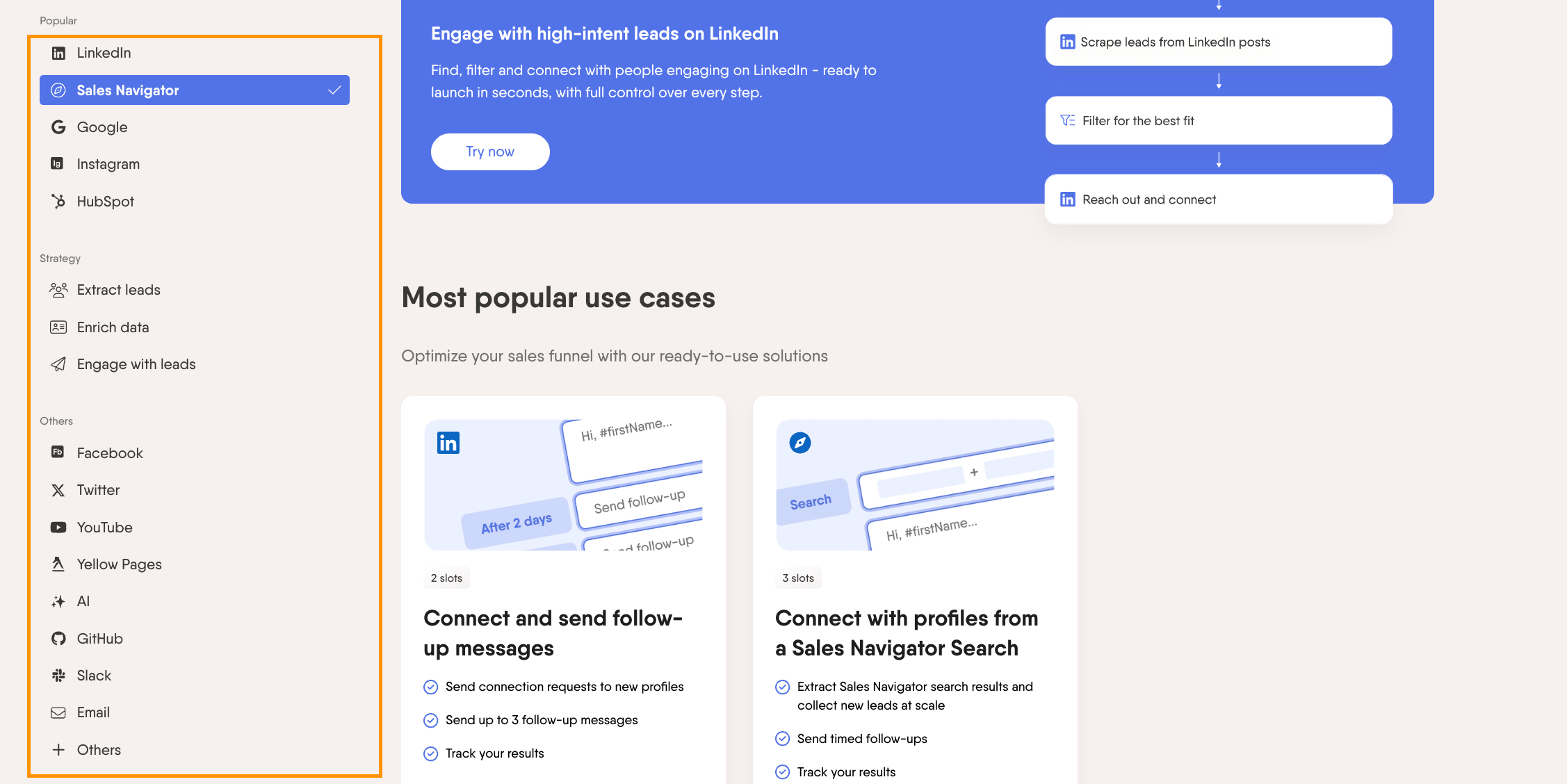
As you can see, they have a bunch of different options to work with. If you ever want to try it out, it has a 14-day free trial with no credit card needed.
I searched for events, and LinkedIn Event Guests Export is exactly what we need here.

Again, you could do all of that manually, but for the sake of time I think it’s much easier to use the tool.
You would need to install the PhantomBuster Chrome extension and be logged in to your LinkedIn. You’d need to set it up only once.
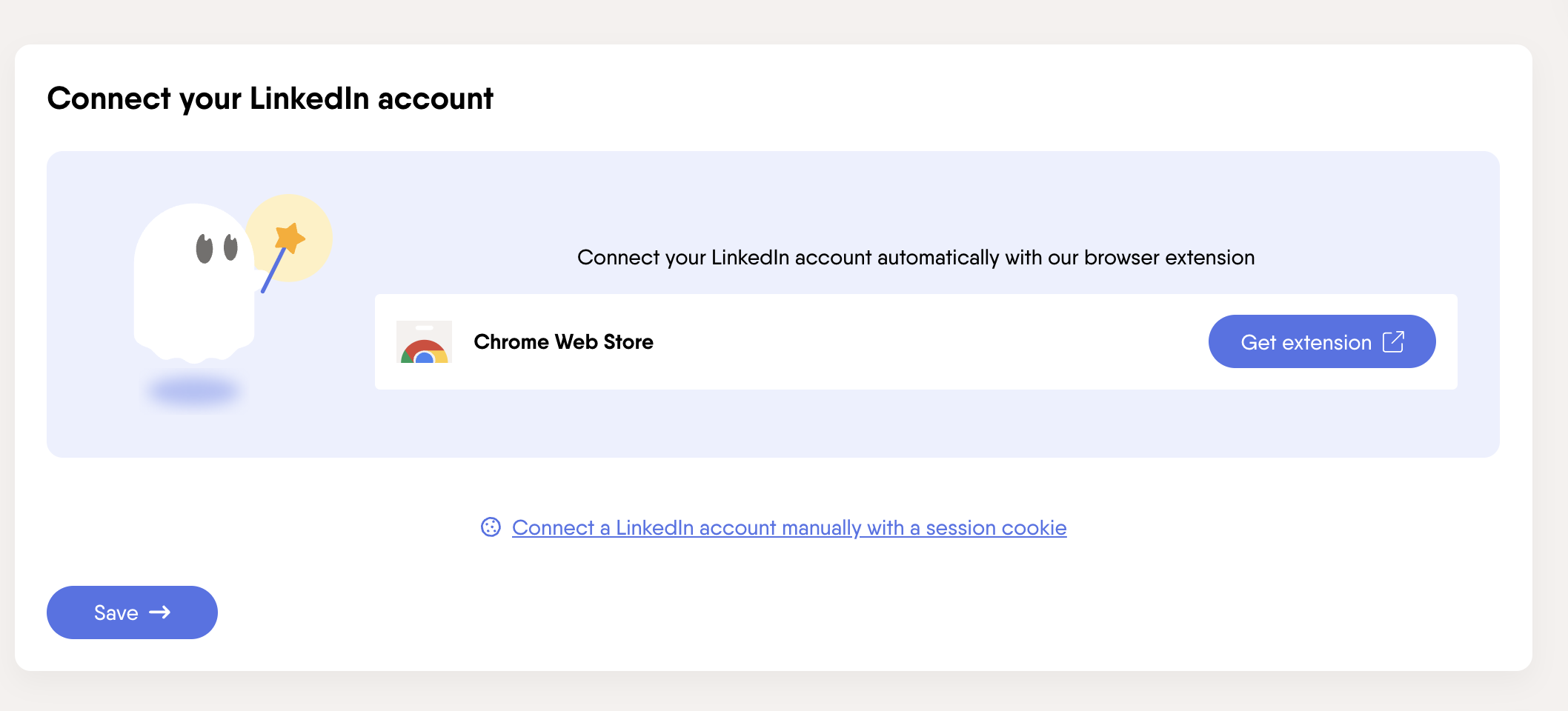
After that you just paste the link of your event.

Set up some other settings. Choose the number of people you want to export and how this contact list should be represented.
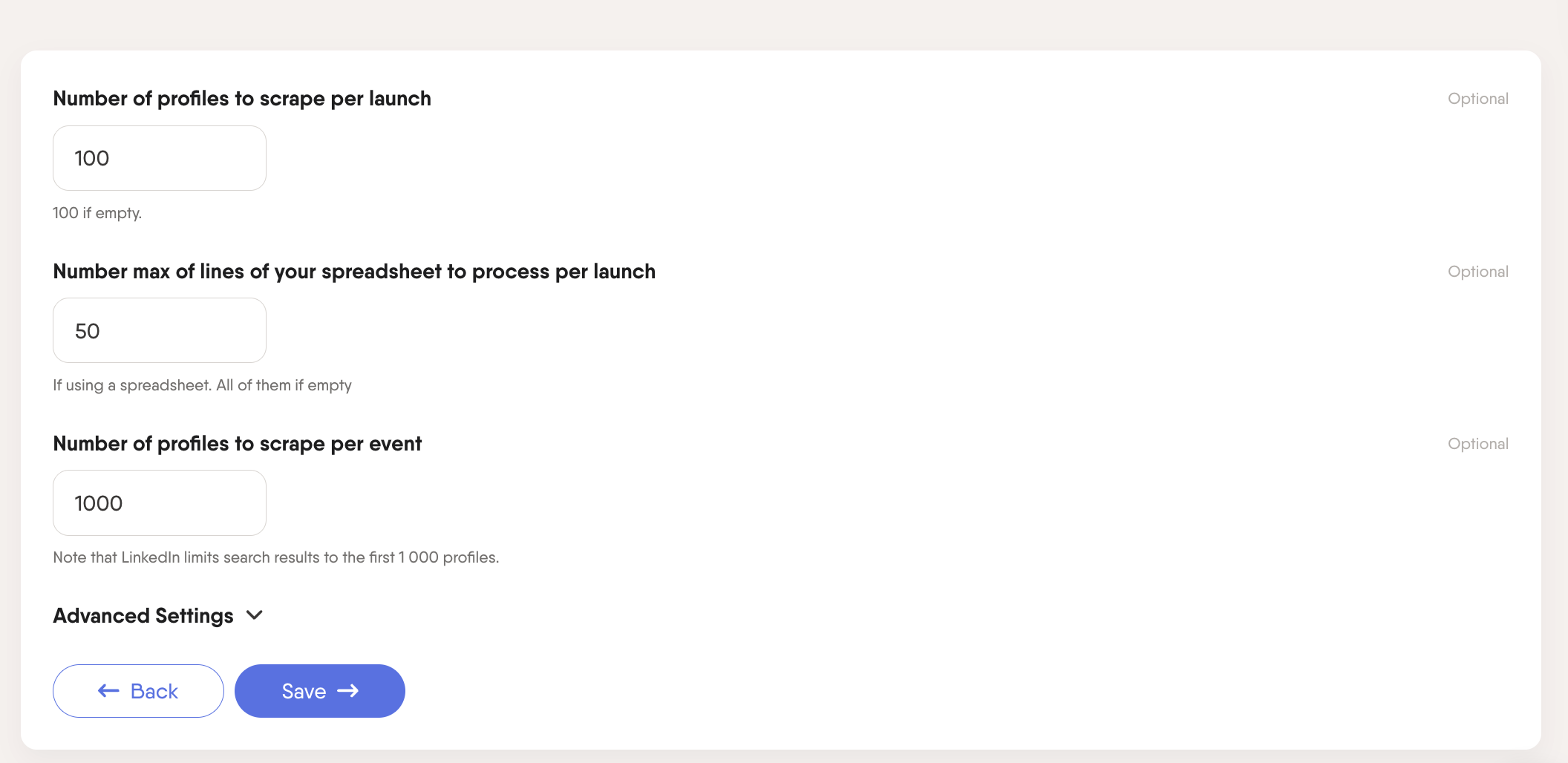
Hit launch and enjoy. You can either download your results or send them to HubSpot. You can also just keep it there, because you can use your database through PhantomBuster too.

If you want to do your search through Sales Navigator, you could do that too. Look for people that we mentioned before in our target audience. Filter them by region, company, or connection if need be. Then you can export the Sales Navigator database too using just your search link.
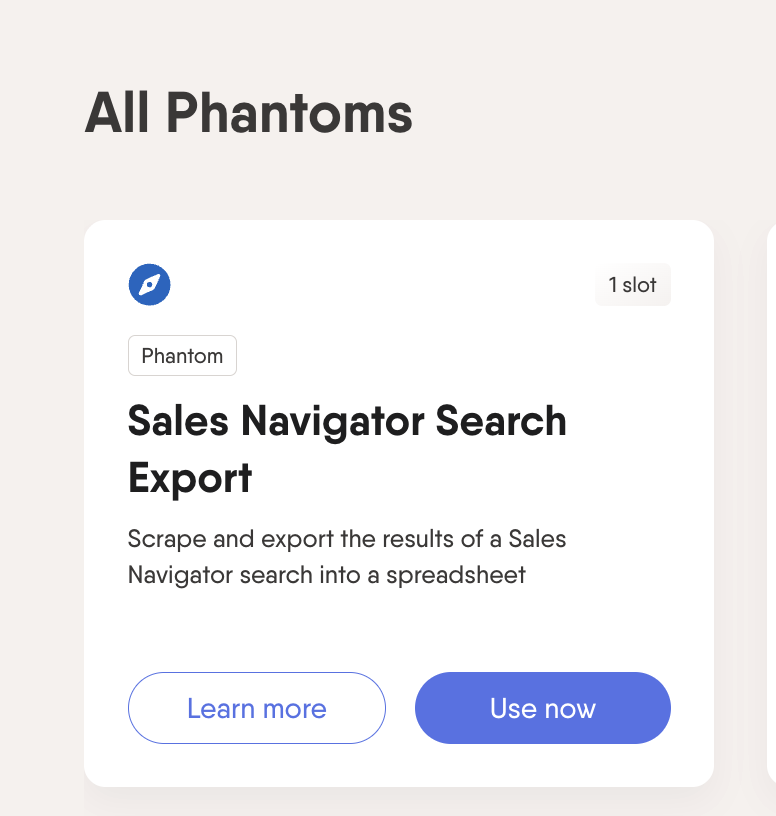
Prepare the message sequence
In the message sequence you should have a connection message (the one that you send when you want to connect with people, with a limit of 200 characters for free accounts) and at least 3 follow-up messages.
As I mentioned before, you should also try different versions of connection or follow-up messages, so think of what would be the most relevant for your case. We will test the follow-up message as I mentioned before.
I wouldn’t suggest trying to sell something in the connection message, because it might decrease your connection rate. You can also try to like or comment on people’s posts before connecting with them. This can be time-consuming, but it's worth testing.
I’d also recommend personalizing messages as much as you can. Check what kind of campaigns these companies are running, what their pain points can be, and what they might be missing.
Here’s an example of the message that you could write:
“Hey #Name, I noticed that your team runs ads on LinkedIn and Google Ads.
My team created a platform that automates budget shifts between platforms based on performance, kind of like a campaign autopilot.
Would you like me to send you a case study (or check out our demo; it depends on your A/B test) from a company that boosted ROI by 22% using it?”
When you have all your messages ready, we can move on to the next step.
Connect/interact with your connections
Before you can send any messages, you need to connect with people. We can use an automation tool to help us with this too.
If we look for the word “connect,” we can find an option that we need.
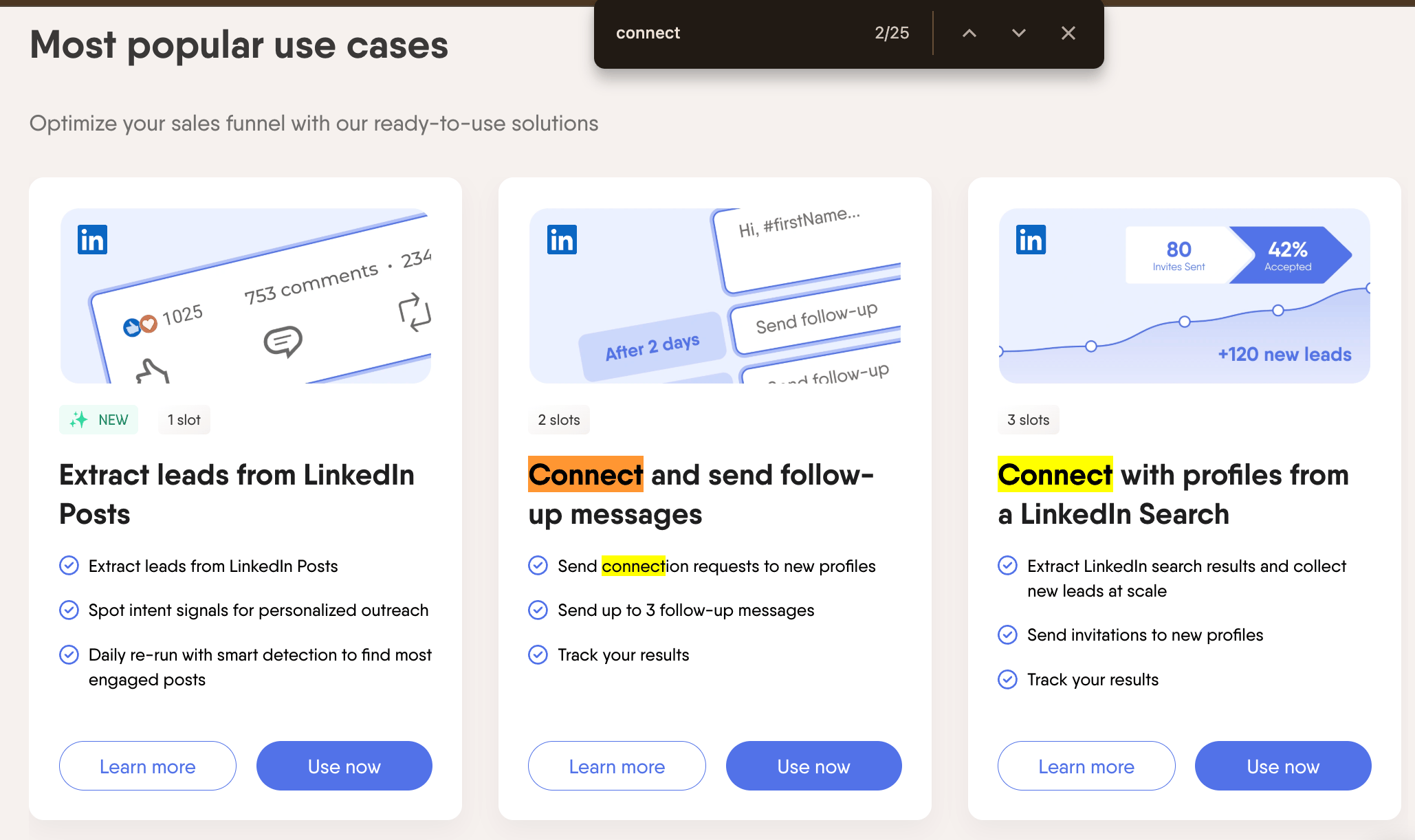
This will basically do all the work for us. You need to pick the source of your database. As I mentioned before, you can use whatever we already collected from the event straight from PhantomBuster; we can upload our own list, use the link, or connect HubSpot base.
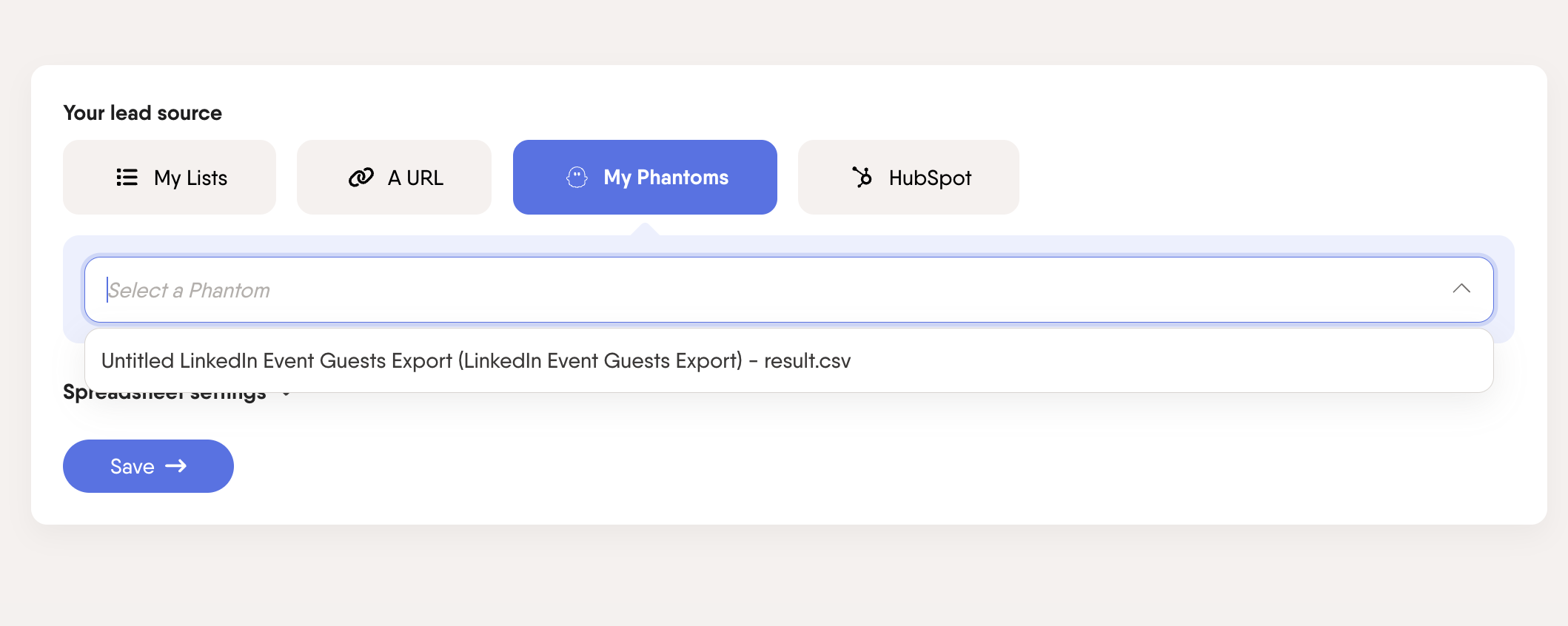
Then we will customize all our messages. There are a couple of things I want you to consider when you do that.

The thing that is challenging in mass messaging is personalization.
As you can see here, you can input the #firtsName# tag, and it will automatically insert the name of your connection, so the message looks more personalized. Some people may use different symbols before their first name, like @ or some kind of emoji (I’ve seen this myself a lot).
In that case the person who receives your connection request would see something like “Hi 🌸Lora” and they would understand that this message sent is automated.
What you can do to prevent that is look through your database and filter people who have weird symbols in their name, don’t belong to your target audience, or have empty profiles. You can search for list cleaning tools for that if you want.
It is important to remember that even though we try to automate this process as much as possible to save some time, it doesn’t mean that we shouldn’t check anything and rely solely on the platform.
You need to double-check everything you do if you don’t want any confusion.
After that step you can write down your main messages.
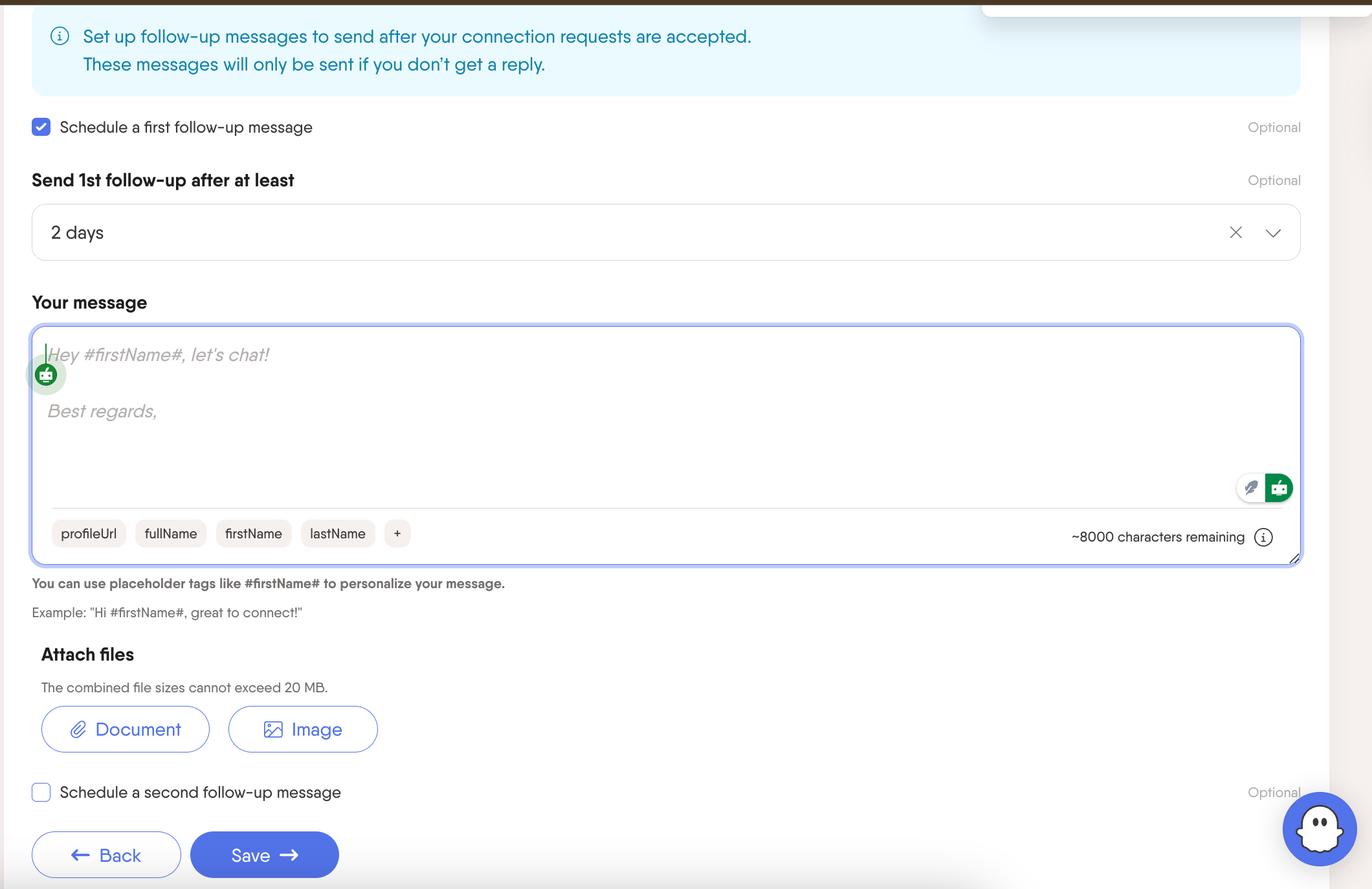
This message will only be sent if your connection request was accepted. You can also set the number of days you want to have in between the connection request and the actual message. You can also attach documents like PDFs, white papers, or images if you wish.
After that, schedule the next follow-up messages, ticking the box at the bottom.
Engage and track the results
Pay attention to how people will respond to you. Some will ignore your message, some will say “not interested,” but some may ask unexpected questions or even argue with you.
I had cases where we were talking about outreach itself and how it’s currently working, or they said that the results that I shared as proof can’t be true or asked questions about how I got their contact. You never know. 🤷♀️
You should also track all your progress; I hope that goes without saying. Track how many connections were sent, how many were accepted, how many follow-up messages you sent, the response rate and how people responded (positive, negative, or neutral), how many got interested, and finally, how many converted (became clients).
Analyze performance and improve it
You may not get the results you hoped for from the first try. It might take some trials and errors to realize what your target audience is, what their pain points are, and how it is better to approach them. This whole sales process can also take more time than you expected, and that's ok too, as long as you are learning and improving.
You can experiment with your messages, follow-up strategies, offers, subject lines, calls to action (CTA), reach channels, and so on. It’s a never-ending process of learning.
I hope you will be able to launch your successful B2B outreach campaign :)
The content on this site is for informational and entertainment purposes only and should not be taken as financial advice. For full details, see the disclaimers section.

Subscribe for marketing advice
I'd actually give a friend
Join our mailing list and never miss a story.

